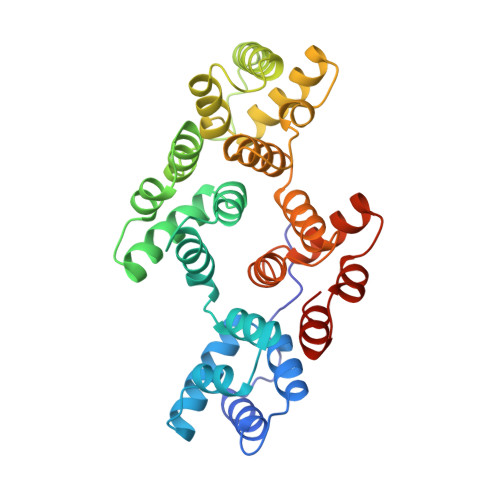Structural and electrophysiological analysis of annexin V mutants. Mutagenesis of human annexin V, an in vitro voltage-gated calcium channel, provides information about the structural features of the ion pathway, the voltage sensor and the ion selectivity filter
Burger, A., Voges, D., Demange, P., Perez, C.R., Huber, R., Berendes, R.(1994) J Mol Biology 237: 479-499
- PubMed: 8151707
- DOI: https://doi.org/10.1006/jmbi.1994.1249
- Primary Citation of Related Structures:
1HVD, 1HVE, 1HVF, 1HVG - PubMed Abstract:
Annexin V binds to phospholipids in a calcium-dependent manner and exhibits calcium channel activity in vitro. We prepared a variety of mutants yielding information about the structure-function relationship of the ion channel activity. All mutants were characterized by X-ray crystallography, electron microscopy and electrophysiological measurements. Their structures are insignificantly changed whereas their electrophysiological properties are drastically different. Glu95, located in the central hydrophilic pore of the molecule, is crucial for the ion selectivity filter as its exchange leads to reduced calcium and increased sodium conductance. The removal of Glu17, located on the protein surface and far from the ion conduction pathway, leads to the appearance of a second conductance level of 9 pS in addition to the conductance level of about 30 pS in the wild-type molecule. This was also the case for Glu78, which is part of a weak calcium binding site. The exchange of Glu17 and Glu78 produced a mutant retaining only the smaller conductance level. We conclude that these two residues influence the angle between the two halves of the molecule, which determines the diameter of the ion conduction pathway, thereby leading to the occurrence of a second conductance level.
- Max-Planck-Institut für Biochemie, Martinsried, Germany.
Organizational Affiliation:

















